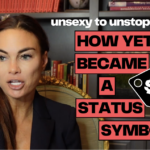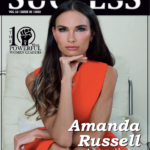PERSONAL STATEMENT
Ever since I started teaching strategic business courses at UCLA in 2015, I had a strong feeling that something was missing in the field of marketing. Each semester, as I continued to teach while simultaneously working to grow and eventually sell my own brand, I was growing more and more frustrated.
Why was I frustrated? I was struggling with the lack of real‐world application, the reliance on outdated methods and theories, the general lack of innovation and forward‐thinking in the marketing industry, and the limited range of opportunities that exist in the field. I was frustrated by how marketing is taught as just another division in business, restricted to one department or individual personnel. Marketing affects your business as a whole, I thought; it is quite literally the difference between failure and success, the average versus the good, and the good versus the great.
Yet the marketing books I was teaching from tended to revolve around the same tired old concepts: attention, popularity, buzz. The current articles and ‘guides’ were often agency‐biased and focused on the wrong metrics—things like followers, views, impressions, conversion, and that ever‐vague term, “engagement”. In looking for better resources for my students, these future leaders of brands and companies, I was seeing in real time the gap between industry and academia…and it was SCARY!
As a chief marketing officer, it was my goal to make sure that my employees truly understand marketing at its core—how to think about it, no matter the technology tools of the day. As professor, it is still my mission to make sure that my students are prepared with the abilities, knowledge and experience to be successful in their future ventures.
To accomplish both these goals, I knew we needed to start with a paradigm shift in how we think. In order to understand marketing, we would first need to understand WHAT it is that influences our audience.
Marketing is getting crowded out by related disciplines and subsidiary tactics—things like digital advertising, social media strategy, integrated communication, public relations and others. By confusing these practices with real marketing, we hinder our ability to achieve big picture growth. Marketing is a long‐term strategy, not a short‐term campaign. It’s about relationships—and to be successful, marketers need to understand the crucial importance of developing a solid infrastructure from which any campaign can be executed. That solid foundation is what companies need to rise above the rest and become truly great.
This is what the study of marketing needs. I knew this even back then…but of course, as I entered academia, I was told otherwise.
I’d come to a crossroads in my career. Met with this roadblock, I had to make a choice. Do I accept the status quo and join forces with the established order of things? Continue to teach the traditional current practices despite all the evidence against their efficacy?
This would have been the path of least resistance, no doubt. But I’m an athlete at heart, and I am fueled by challenge—I like to be pushed outside my comfort zone (and running endless miles day in and day out with excess pressure will teach you to embrace the uncomfortable.) I know that, more often than not, the right path is uncharted, with no map or mile markers—full of potential, but requiring a lot of work (and minds) to pave a road for others to follow.
Many people are afraid of change, and even more are afraid of failure. But if someone doesn’t venture out to do it, we will never change and evolve. We need more marketing professionals and academic leaders willing to push the envelope just a little bit more.
In business, we talk about the ability to adapt and be agile; we talk about the importance of continuous innovation, the power of opening your mind and asking questions, of expanding your comfort zone. I believe it is my calling to be that person, to push the envelope in the field of studying marketing, to break the mold.
So I designed courses; I wrote a book; I’m working my soul to the bone to integrate this new way of thinking, this new curriculum, into as many top schools and organizations as I can. People often thought running was my calling in life. But it was only a steppingstone—a training regimen to help me learn how to set goals and achieve them. This is my calling, my higher purpose.
No big deal right? Bring it on!
ABOUT THE INFLUENCER CODE
AMANDA RUSSELL
Author of The Influencer Code: How to Unlock the Power of Influencer Marketing
Format: Trade Paperback, 6 x 9, 400 pages
ISBN: 978‐1‐57826‐824‐5. Also available in eBook (978‐1‐57826‐825‐2) Published by Hatherleigh Press. Distributed by Penguin Random House. Get your Copy here
From Fortune 500s to local fitness studios, the future of marketing lies in forming authentic partnerships. Written by an accomplished entrepreneur, professor, and award‐winning YouTube star, The Influencer Code is the essential reference for any company looking to leverage the full power of influence to elevate their brand and grow their business. The Influencer Code simplifies the complex world of “influencer marketing” and provides groundbreaking insight on how to research, evaluate, and employ the right
influencers for your market. A powerful 3‐step code process, The Influencer Code unlocks the vast potential of influential marketing and how to harness it to achieve your goals.







